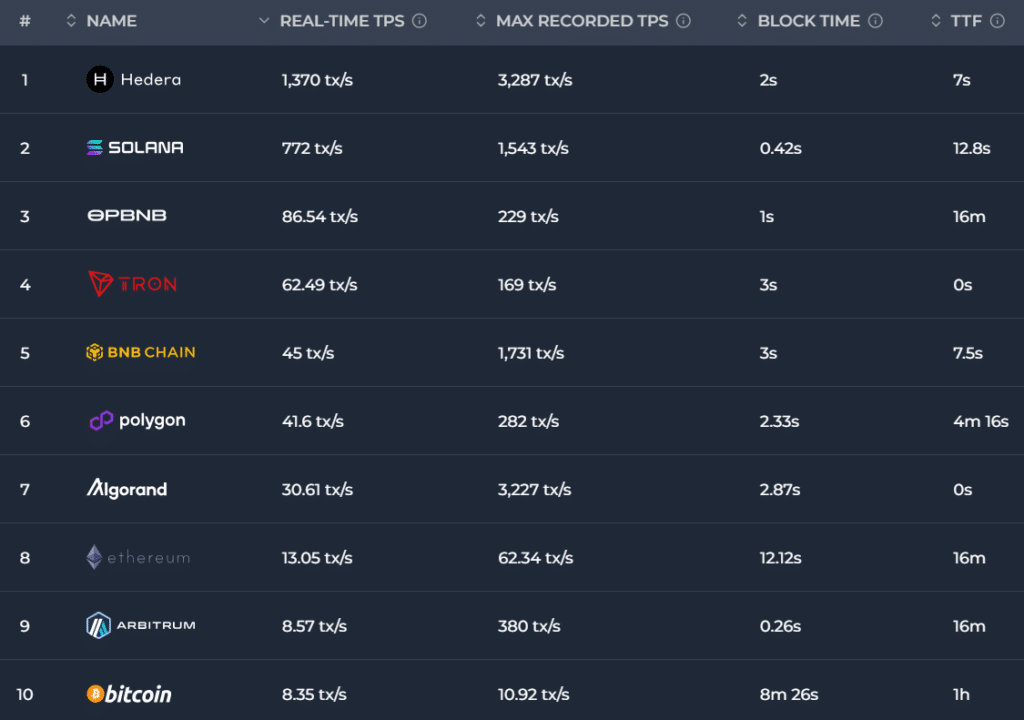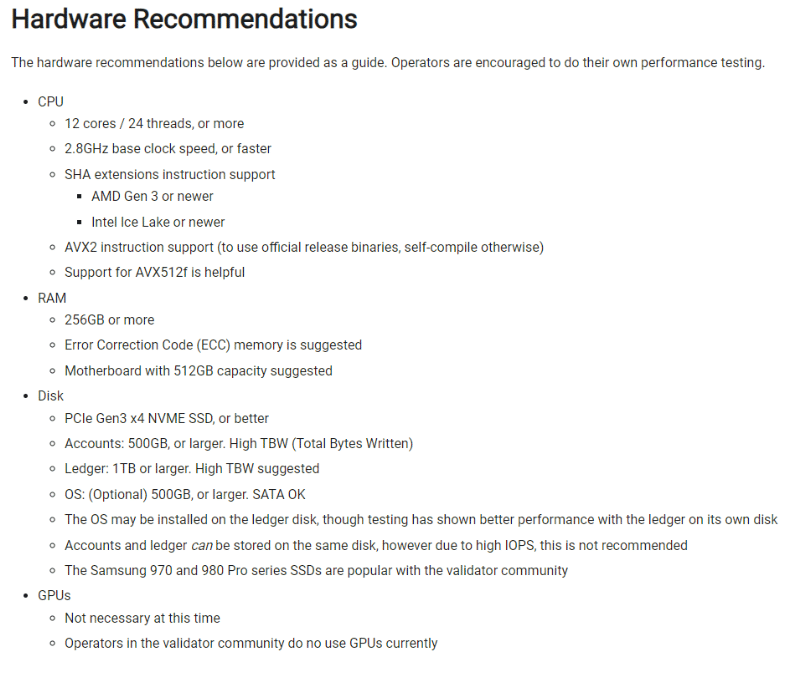Whereas tradeoffs are unavoidable, consultants interviewed by crypto.information imagine that the blockchain trilemma sheds gentle on the challenges builders face and methods to navigate them.
The blockchain trilemma, coined by Ethereum co-founder Vitalik Buterin in 2017, highlights the challenges builders face in creating distributed ledger techniques. In accordance with Buterin, architects should make tradeoffs and prioritize two out of three key options.
In an interview with crypto.information, Luke Nolan, a analysis affiliate at CoinShares, concurred with this viewpoint. Nolan believes that, in a broad sense, the blockchain trilemma successfully illustrates the problem of reaching all three options to their fullest extent. He emphasised that builders typically sacrifice some points or each when optimizing one characteristic.
The blockchain trilemma
Alex Dulub, Founding father of Web3 Antivirus, means that rushing up a blockchain can typically compromise its security. He believes that options like Layer-2 (L2) networks and sidechains, dealing with transactions exterior the principle blockchain, can enhance velocity and scalability however might introduce new dangers.
Dulub thinks that good contract bugs, centralization dangers, and potential assaults are the important thing vulnerabilities for blockchains aiming to enhance all three points.
Neville Grech, the founding father of Dedaub, a blockchain safety agency, factors out that growing parameters equivalent to block dimension and frequency to reinforce velocity might demand extra computational energy, bandwidth, and storage than common nodes can deal with. This might result in a extra centralized community construction, with only some nodes totally collaborating within the blockchain.
Whereas adjusting the validation course of may velocity up a community, Grech warns that “it might expose the blockchain to vulnerabilities and validation disputes and create short-term forks.”
Furthermore, in line with him, decreased participation of nodes and validators within the verification course of might compromise the community’s decentralization and the integrity of the blockchain.
As an instance, the Bitcoin community, regardless of being decentralized and safe with over a million BTC miners worldwide, processes a mean of 8.35 transactions per second (TPS). This determine is considerably decrease than centralized cash transmitters like Visa, which boasts a TPS vary of 1,500 to 2,000.

In distinction, Zcash’s blockchain usually operates at a mean velocity of 26 transactions per second (TPS) for non-shielded transactions. Nonetheless, a September 2023 report revealed that over 50% of Zcash’s hash charge was controlled by the ViaBTC mining pool, exposing the community to the chance of a 51% attack.
Take Solana (SOL) as one other instance, boasting a present real-time TPS of 772, in line with Chainspect information. Regardless of dealing with its tenth main outage in February 2023, the community has demonstrated excessive stability since then.
In a July 21, 2023 report, the Solana Basis declared a 100% uptime for the Solana blockchain. This achievement adopted enhancements within the ratio of voting-to-non-voting transactions.
On this case, Luke Nolan, a analysis affiliate at CoinShares, factors out that the first tradeoff made was with decentralization, and in line with him, “safety has come at a extra minimal tradeoff.”
He highlights that the worth of working a Solana validator could be fairly excessive, ranging between $3,000 and $5,000. This excessive price makes it costly for most people to function a Solana validator, posing dangers of centralization.

In accordance with Solana Compass data, Solana at present has a complete of two,919 nodes with greater than 433,000 stakers. The variety of the community’s nodes has declined considerably since March 2023 after reaching an all-time excessive (ATH) of two,564 working nodes.
Whereas the variety of Ethereum nodes has been persistently declining since mid-January, at present hovering round 7,000, it’s nonetheless 2.4 instances increased than Solana’s working units.
This quantity is cheap provided that Ethereum nodes require decrease {hardware} necessities in comparison with Solana and cost between $500 and $1,000. As well as, the variety of Ethereum stakers can be considerably increased than Solana’s — at present standing at over 921,000.

Nolan additionally talked about that Ethereum has, for now, put apart the thought of Layer-1 (L1) scaling to keep away from compromising decentralization or safety. At the moment, Ethereum handles a mean of round 13 transactions per second (TPS), with its highest recorded TPS reaching 62.34.
“General, I wouldn’t say the variety of validators is the #1 metric of decentralization, however from a philosophical viewpoint, you could possibly run an Ethereum node for very low-cost, assist progress the chain even with out staking 32 ETH — though in fact, you wouldn’t earn something.”
Luke Nolan advised crypto.information.
Options
To point out that the blockchain trilemma isn’t an unbreakable rule, firms are introducing inventive options that problem the concept that velocity and safety are at all times at odds. Let’s discover among the high options that goal to steadiness scalability, safety, and decentralization.
- L2 networks: These options improve Layer-1 blockchains by boosting transaction velocity, reducing charges, and enhancing total scalability. L2s let the principle chain deal with safety and decentralization, whereas Layer-2 networks deal with scalability and effectivity. Technically, L2 blockchains inherit the safety of L1 networks.
- Consensus mechanism modifications: New consensus mechanisms, equivalent to Proof of Stake (PoS) variants, goal to steadiness safety and velocity with out main compromises. Transitioning from Proof of Work (PoW) to PoS may very well be a major option to improve transaction throughput whereas lowering processing charges.
- Segregated Witness (SegWit): Carried out in Bitcoin in 2017, SegWit scales blockchain throughput by separating transaction signatures from transaction information and storing them otherwise. This separation improves area effectivity, streamlines verification, and reduces the general dimension of transaction data.
- Sharding: Methods like sharding distribute transaction processing throughout smaller teams of nodes, growing velocity whereas sustaining safety. Concord blockchain, for instance, uses sharding and at present achieves a two-second finality time, whereas Solana’s Time to Finality (TTF) is round 12.8 seconds.
- Rollups:
- Zero-knowledge rollups (zk-rollups): These rollups bundle a whole bunch of transactions off-chain and generate a cryptographic proof, often called a zero-knowledge proof.
- Optimistic rollups: These function on the belief that transactions are legitimate by default. They perform the computation on the Layer-1 (L1) blockchain solely in case of a dispute. This introduces a finality delay in verifying the legitimacy of transactions earlier than they attain the L1 community. If a transaction is discovered to be invalid, it may be rolled again to stop any detrimental penalties.
Conclusion
Quick blockchains don’t immediately sacrifice decentralization and safety; as an alternative, the blockchain trilemma sheds gentle on challenges builders confront and the occasional tradeoffs they have to navigate.
“In a nutshell, whereas velocity typically poses tradeoff challenges with safety, the blockchain group’s relentless innovation can present some options. It’s not nearly selecting between velocity and safety; it’s about neatly engineering the blockchain to steadiness each.”
Neville Grech advised crypto.information.
Dulub emphasizes that “cautious design, rigorous testing, and ongoing analysis are key to managing the challenges” related to the blockchain trilemma.

